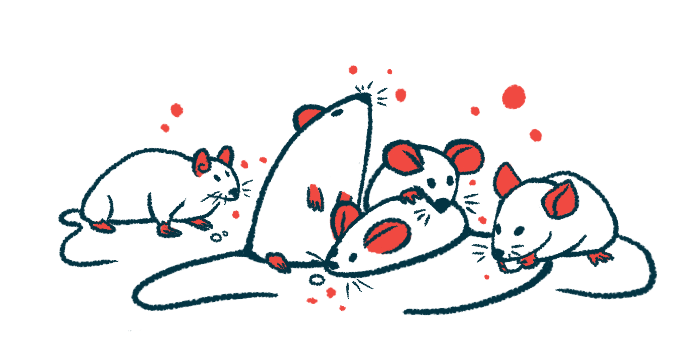Targeting 3 cell types at same time seen to extend survival in ALS mice
New strategy targets neurons, astrocytes and microglia affected in disease

A strategy that simultaneously targets motor neurons, astrocytes, and microglia — three cell types involved in the development and progression of amyotrophic lateral sclerosis (ALS) — was shown to further extend survival in a mouse model of the disease.
Specifically, targeting the three cell types at the same time had a superior therapeutic effect compared with targeting only two.
In this preclinical work, “our results demonstrate a profound effect of combination treatment,” the researchers wrote.
The study, “Combination AAV therapy with galectin-1 and SOD1 downregulation demonstrates superior therapeutic effect in a severe ALS mouse model,” was published in the journal Molecular Therapy Methods & Clinical Development.
Combined treatment extended survival 64% vs. untreated ALS mice
In ALS, motor neurons — the nerve cells that control voluntary movements — become damaged and gradually die, leading to muscle weakness. Neuroinflammation, or inflammation in the nervous system, is thought to play a role in how neurodegenerative diseases like ALS develop and progress.
It’s well understood, however, that cells other than motor neurons are affected in ALS. Astrocytes, the star-shaped cells that support neurons, and microglia, the resident immune cells in the brain, also are known to play an important role in the disease.
Earlier work by researchers in the U.S. showed that lowering the levels of SOD1 — whose gene is mutated in some cases of ALS — in motor neurons and astrocytes significantly improved motor function and helped ALS mice live longer.
However, the mice still eventually died, and their brain showed signs of overactive microglia. This suggests that the microglia were contributing to the progression of ALS and that the efficacy of treatment could potentially increase if these cells were also targeted.
Now, the researchers explored a strategy that targeted all three cell types. Motor neurons and astrocytes were targeted directly, with the treatment reducing the amount of abnormal SOD1 being produced from the mutated gene, and microglia were targeted indirectly.
[The] results highlight the importance of targeting inflammatory microglia as a critical component in future therapeutic development.
The approach specifically involved delivering a genetic payload to cells using an adeno-associated virus, a harmless virus often used in gene therapies. The astrocytes that were directly targeted to reduce SOD1 production also received a gene to produce galectin-1 (Gal1), a protein that can counteract inflammation. As astrocytes secreted Gal1 to the surrounding tissues, the microglia became less active and inflammation was decreased.
In lab-grown cells, the researchers showed that the effect of Gal1 on microglia, together with the reduction of SOD1 levels in the other cell types, reduced inflammation in microglia and prevented motor neurons from dying.
In mice with ALS, the combined treatment also significantly extended survival by a median 27% compared with lowering the levels of SOD1 alone, and by 64% compared with untreated animals.
The findings suggest that to effectively treat ALS, therapeutic strategies may need to take a comprehensive approach that targets many cell types involved in the progression of the disease.
“These results highlight the importance of targeting inflammatory microglia as a critical component in future therapeutic development,” the researchers concluded, noting that their strategy was well tolerated in mice.







